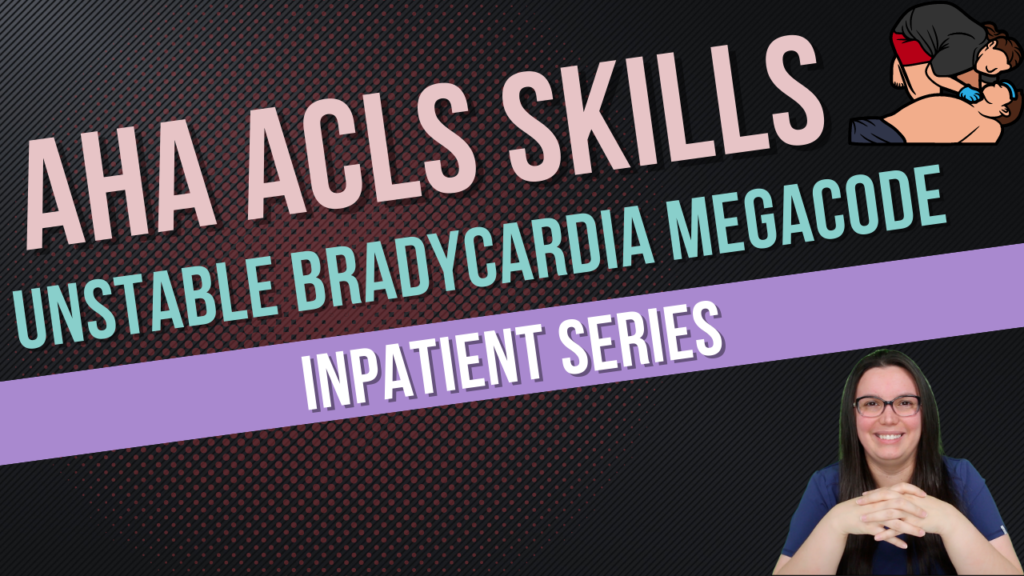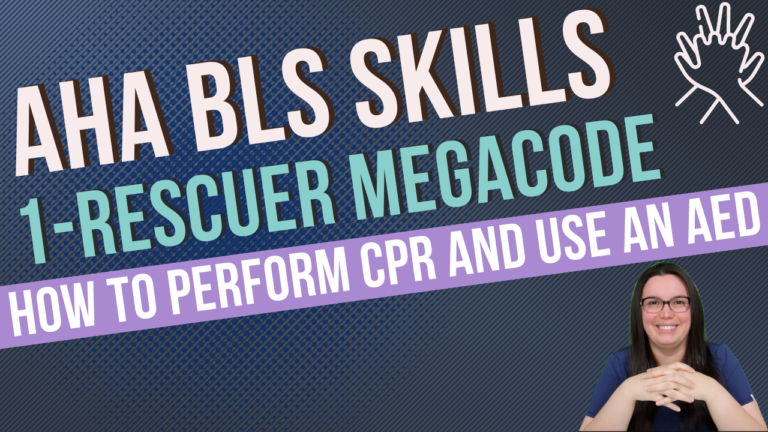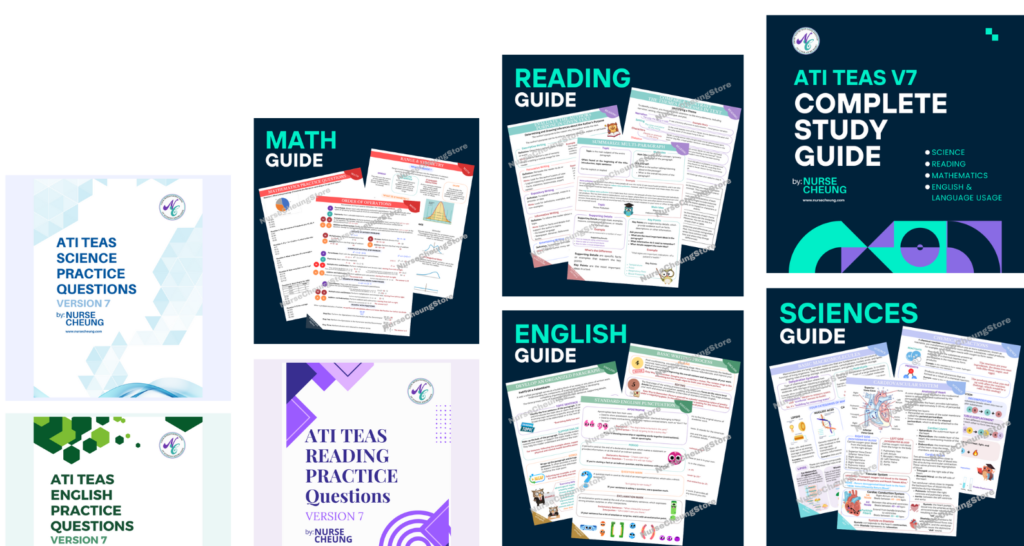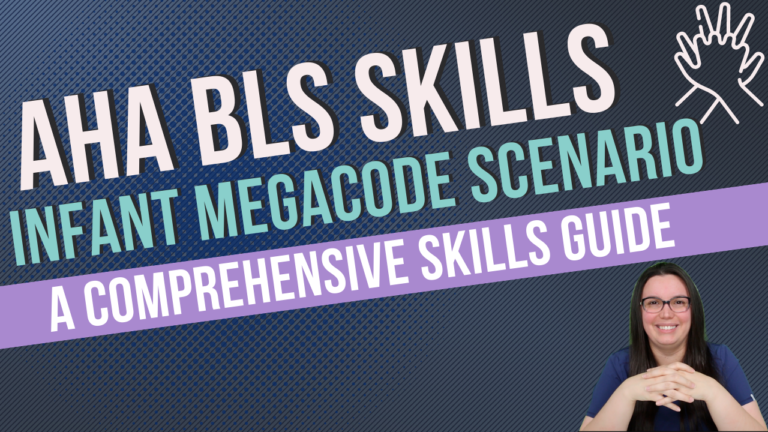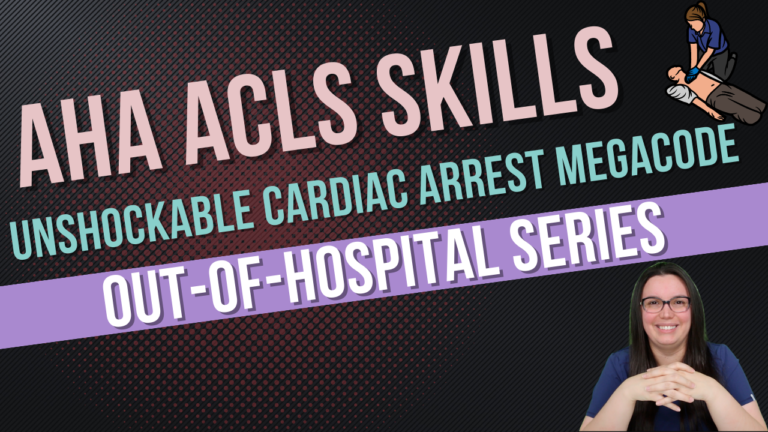In this blog post, we will discuss how to respond to an inpatient ACLS unstable bradycardia megacode. This is a serious emergency situation that requires quick action.
If you are not familiar with the megacode, don’t worry! We will go over the steps that you need to take in order to provide lifesaving care for the patient.
Adult Inpatient Unstable Bradycardia Megacode Scenario
The following is a scenario in which you would use the inpatient adult unstable bradycardia Megacode:
You are a healthcare provider working in the cardiac telemetry observation unit. You are performing your morning patient assessment when you note that the monitor is showing bradycardia.
Demonstrate what you would do next
Initial Impression
The 45-year-old male is sitting upright on the hospital bed. He is feeling cold and clammy. There are no complaints of chest pain, dyspnea, or palpitations. Overall he has been healthy with no recent changes to his medications.
Primary Assessment Survey (A, B, C, D, E)
Airway: The airway is patent. The flow through the trachea is not impaired.
Breathing: Oxygenation is showing 98% on 2LNC.
Circulation: Blood pressure is 90/50, heart rate is 30/min, a rhythm check shows sinus bradycardia, and the pulse is present but weak.
Disability: The patient is alert and oriented.
Exposure: No obvious signs of trauma, bleeding, burns, markings, or medical alert bracelet.
Change in Condition
After assessment of the initial impression and primary assessment, the patient states he is having some chest discomfort and his extremities feel cool to the touch.
What are your next actions?
- Check responsiveness: Tap the shoulders and shout, “Are you okay?” This step is not necessary as the patient is awake, alert, and oriented.
- Activate the emergency response system. Call your charge nurse, call rapid response, and place a page out to the doctor.
- Check for breathing: Look for visible chest rising and falling. Breathing is present but slightly weak.
- Check for a pulse: Place your fingers on the inside of the patient’s neck, just below the angle of the jaw. You will palpate the carotid pulse for no more than 10 seconds. Pulse is present but weak.
What are your next actions?
Pulse and breathing is present so we will not begin CPR starting with compressions.
Unstable Bradycardia Algorithm
Identify and Treat the Underlying Cause
- Maintain patent airway, assist with breathing if necessary – Airway is patent and breathing is spontaneous
- Oxygen (if hypoxemic) – The patient is not hypoxemic at this time and already has 2LNC on.
- Cardiac monitor, blood pressure, oximetry – Sinus Bradycardia, BP 90/50 (confirmed this is low for the patient), 98% on 2LNC
- IV Access – 20 gauge in the left and right antecubital
- 12-Lead ECG if available and doesn’t delay therapy – Not readily available
- Consider hypoxic and toxicologic causes – Myocardial Ischemia/infarction, calcium-channel blockers, beta-blockers, digoxin, hypoxia, hyperkalemia
Persistent Bradyarrhthmia Causing
- Hypotension? – YES
- Acutely altered mental status? – No
- Signs of shock (low blood pressure, altered mental status, cold moist skin, weak or rapid pulse, rapid breathing, decreased urine output) – YES
- Ischemic chest discomfort? – YES
- Acute heart failure (heavy breathing, suffocating sensation, struggle to breathe while lying down, tight chest, arrhythmia, cough, fluid retention, loss of consciousness)? – YES
Interventions
What interventions could you perform next?
- Atropine 1mg bolus – Atropine was successful
If atropine was not effective or contraindicated:
- Transcutaneous pacing
- Dopamine
- Epinephrine
- Labs – electrolytes and cardiac biomarkers
- Urinalysis
- Fluids
- Chest x-ray
- Cardiac Consultation
- Transfer to a higher level of care – Cardiac or Medical PCU
You will begin the transfer to a higher level of care. Your scenario has concluded.


